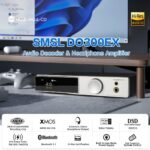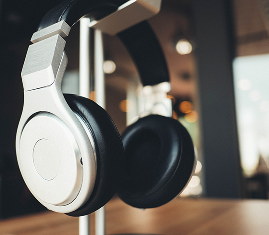In the fast-paced world of audiophiles, true connoisseurs understand that listening goes beyond just hearing. It’s about honing the skill of critical listening to achieve an unparalleled audio experience. Whether you’re cherishing a symphony’s delicate notes or dissecting a rock ballad’s intricate layers, this article unveils the secrets to becoming a master at critically listening to music. Get ready to embark on a journey of discerning nuances, unraveling hidden melodies, and separating the soul of every song that graces your ears.
Understanding the Concept of Critical Listening
Definition of Critical Listening
Critical listening refers to actively and attentively listening to audio content to analyze and evaluate its various aspects, such as sound quality, dynamics, balance, and tonality. Unlike casual listening, where the primary goal is enjoyment, critical listening involves a more focused approach that aims to understand and appreciate the technicalities and nuances of the sound. It is a skill that audiophiles strive to develop to enhance their overall listening experience.
Importance of Critical Listening for Audiophiles
For audiophiles, critical listening is of paramount importance. It allows them to fully immerse themselves in the intricacies of music and audio reproduction, enabling them to discern minute details and appreciate the artistry and craftsmanship behind each recording. By honing their critical listening skills, audiophiles can make more informed decisions when selecting and evaluating audio equipment, optimizing their listening environment, and even assessing the performances of artists and musicians. Critical listening empowers audiophiles to get the most out of their audio experience and deepen their appreciation for high-quality sound reproduction.
Difference between Critical Listening and Casual Listening
While casual listening is typical for many, critical listening sets itself apart by demanding a more engaged and analytical approach. Casual listening often involves listening to music or audio content for leisure or entertainment purposes without paying much attention to the technical aspects. On the other hand, critical listening requires active and focused listening, where you consciously evaluate the different elements of the sound, such as imaging, soundstage, instrument separation, and frequency response. It is a more deliberate way of experiencing audio, geared explicitly towards discerning sound quality and accuracy.
The Audiophile Mindset for Critical Listening
Cultivating an Open Mind
To fully embrace critical listening, it is essential to cultivate an open-minded mindset. This means approaching each listening session without preconceived notions or biases. Keep in mind that every recording and piece of music has its unique characteristics, and by remaining open to different genres, artists, and styles, you can expand your appreciation and understanding of sound. Be willing to explore new territories and venture outside your comfort zone to appreciate the intricacies and diversity of audio reproduction.
Mindful Listening
Mindful listening involves being fully present and engaged while listening to music or audio. It means eliminating distractions, finding a quiet space, and devoting your complete attention to the sound. Avoid multitasking or doing other activities that may divert your focus. By practicing mindful listening, you can develop a deep connection with the music and notice subtle details you might have missed. Mindful listening lets you fully immerse yourself in the audio experience and appreciate the subtle nuances and emotions conveyed through sound.
Embracing Objectivity
When it comes to critical listening, it is crucial to embrace objectivity. Try to detach yourself from personal preferences or biases and approach each listening session objectively. Instead of judging the sound based on your preferences, focus on evaluating the technical aspects such as tonal balance, imaging, dynamic range, and clarity. This objectivity allows you to objectively assess the audio’s quality and make informed judgments about the sound reproduction.
Avoiding Auditory Bias
Auditory bias refers to the tendency to favor specific characteristics or qualities of sound over others. It can influence how we perceive and evaluate audio, potentially leading to prejudices or misconceptions. To avoid auditory discrimination, consciously train yourself to be aware of any preconceived notions or preferences you may have. Be mindful of any choices for specific frequencies, sound signatures, or genres, and try to approach each listening session with a neutral and unbiased mindset.
The Science Behind Sound and Listening
Understanding the Anatomy of the Ear
Critical listening is deeply intertwined with our understanding of the human auditory system and how sound is perceived. The ear is a complex organ that consists of three main parts: the outer ear, the middle ear, and the inner ear. The outer ear, which consists of the pinna and ear canal, collects sound waves and directs them towards the middle ear. The middle ear contains the eardrum and a chain of three tiny bones, known as the ossicles, that transmit and amplify sound vibrations. The inner ear, located deep within the skull, contains the cochlea, which converts good vibrations into electrical signals that the brain can interpret.
How the Brain processes Sounds
Once sound waves enter the ear, they are converted into neural signals through a complex process. The cochlea, found within the inner ear, contains thousands of tiny hair cells responsible for converting mechanical vibrations into electrical signals. These signals are then transmitted to the brain through the auditory nerve. The brain processes and interprets these electrical signals as sound, allowing us to perceive and make sense of the acoustic information.
The Effect of Sound Frequencies
Sound frequencies play a crucial role in how we perceive different aspects of audio. Frequencies are measured in Hertz (Hz) and represent the number of cycles a sound wave completes per second. Different frequencies correspond to different pitch levels, with lower frequencies producing lower and higher frequencies making higher-pitched sounds. Critical listening involves paying attention to the balance and reproduction of different frequencies within a recording, ensuring the sound is accurately reproduced across the full spectrum of audible frequencies.
Developing the Skill of Critical Listening
Pract
icing Active Listening
Active listening is a fundamental skill to develop for critical listening. It involves actively engaging with the sound and being fully present in the listening experience. Practice active listening, eliminate distractions, and focus solely on the audio content. Pay attention to the nuances, dynamics, and details within the sound. Train yourself to actively follow different instruments or voices within a recording and discern their spatial location. By actively participating in the listening process, you can uncover new details and gain a deeper understanding of the audio.
Analyzing Different Sound Components
Critical listening requires a keen ability to analyze and evaluate the different components of sound. This involves discerning aspects such as tonal balance, imaging, soundstage, instrument separation, and dynamics. Listen for the tonal balance, ensuring no frequencies are overpowering or lacking in presence. Assess the imaging and soundstage, which refers to the spatial placement and depth of instruments and voices within the soundstage. Evaluate instrument separation, where each device is heard distinctly and clearly. Please pay attention to the dynamics and how the sound transitions from quiet to loud, ensuring it is accurately conveyed. By analyzing these different components, you can better understand the audio and its quality.
Training the Ears to Detect Subtleties in Sound
Detecting subtleties in sound is a crucial aspect of critical listening. Training your ears to discern nuances and intricate details takes time and practice. Expose yourself to audio content, including genres, artists, and recording techniques. Gradually, you will become sensitive to subtle tonality, dynamics, and imaging differences. It is important to remember that improving your critical listening skills is a continuous process, so be patient and consistent in your practice.
Balancing Input from Both Ears
Listening with both ears is essential for critical listening. Our ears work together to create a three-dimensional soundscape, allowing us to perceive spatial information and sound localization. Train yourself to listen with both ears simultaneously, avoiding the tendency to favor one ear over the other. By balancing the input from both ears, you can fully appreciate the imaging and depth within the sound, enhancing your overall critical listening experience.
The Role of Audio Equipment in Critical Listening
Importance of High-Quality Audio Equipment
High-quality audio equipment plays a crucial role in critical listening. The sound reproduction’s accuracy, precision, and fidelity heavily depend on the quality of the audio equipment used. Investing in high-quality speakers, headphones, amplifiers, and digital-to-analog converters (DACs) can significantly enhance the critical listening experience, allowing for a more accurate and faithful audio content reproduction. High-quality audio equipment ensures that you are hearing the sound as it was intended to be heard, without coloration or distortion.
Effect of Equipment on Sound Quality
Each component in an audio system, from the source to the speakers or headphones, can impact the overall sound quality. The choice of audio cables, the quality of the DAC, the power of the amplifier, and the characteristics of the speakers all contribute to the final sound. To achieve the highest accuracy and fidelity in sound reproduction, it is essential to choose audio equipment that is well-matched and designed with precision. This ensures that the sound is faithfully reproduced, allowing you to discern the subtle details and nuances critical listening demands.
Exploring Different Types of Headphones and Speakers
Different types of headphones and speakers offer unique listening experiences and characteristics. Open-back headphones, for example, provide a more spacious and natural soundstage, while closed-back headphones offer better isolation and a more intimate listening experience. Similarly, different types of speakers, such as bookshelf speakers or floor-standing speakers, can offer different sound signatures and spatial characteristics. Exploring different types of headphones and speakers can broaden your understanding of sound reproduction and help you develop a more discerning ear for critical listening.
Mastering the Techniques of Sound Comparison
Understanding A/B Testing
A/B testing is commonly used in critical listening to compare and evaluate different audio components or settings. It involves listening to two audio sources or settings sequentially and comparing their differences. For example, you might compare the sound of two different headphones or the effect of other cables on the audio quality. By directly comparing the sound characteristics of other components, you can better understand how various factors impact the overall sound.
The Role of Blind Testing in Audio Analysis
Blind testing is another crucial technique in critical listening that eliminates bias and preconceived notions when evaluating audio quality. In blind testing, the listener is unaware of the source or component being listened to, ensuring that judgments are based solely on the sound quality. By removing any visual or brand-related cues, blind testing enables a more objective assessment of the sound reproduction, allowing you to focus solely on the technical aspects of the audio.
Benefits and Limitations of Comparative Listening
Comparative listening, whether through A/B testing or blind testing, offers several benefits in pursuing critical listening. It allows for direct comparisons between different audio components, settings, or sources, enabling you to make more informed decisions about sound quality. However, it is essential to be aware of the limitations of comparative listening. It may not always capture sound reproduction’s full nuance and complexity, and personal listening preferences can still influence judgments. Nonetheless, close listening can be a valuable tool to refine and enhance your audio experience when used with other critical listening techniques.
Impact of Environment on Critical Listening
Influence of Room Acoustics on Sound
The environment in which you listen to music can significantly impact your critical listening experience. Room acoustics, in particular, play a crucial role in perceiving sound. Factors such as the size and shape of the room, the presence of reflective surfaces or porous materials, and the placement of speakers or headphones can all affect how sound is transmitted and perceived. It is essential to optimize your listening environment by considering room treatment options, speaker placement, and seating position to minimize unwanted reflections, improve soundstage, and enhance overall sound quality.
Dealing with Ambient Noise
Ambient noise can significantly hinder critical listening, as it can mask subtle details and affect the perception of sound quality. Find a quiet space for essential listening, away from distractions and noise sources. Consider using noise-canceling headphones or soundproofing materials to minimize the impact of ambient noise. By creating a controlled listening environment, you can focus on the intricacies of the audio content without disturbances or interruptions.
Position Adjustment for Better Sound Perception
The positioning of speakers or headphones can significantly impact sound perception and imaging. Properly adjusting the position of speakers or wearing headphones correctly is crucial for an optimal critical listening experience. Experiment with different placements and works to find the sweet spot with the best tonal balance, imaging, and soundstage. Minor speaker toe-in, spacing, or earcup positioning adjustments can significantly improve sound quality and the overall listening experience.
Practice Sessions for Improving Critical Listening Skills
Listening to Diverse Genres of Music
Exposing yourself to various music genres is an excellent way to improve your critical listening skills. Each genre presents unique sound characteristics, production techniques, and musical styles. By listening to diverse genres, you can develop a broader understanding of sound reproduction and train your ear to recognize and appreciate a variety of musical elements. From classical to jazz, rock to electronic, each genre offers something different and can enhance your critical listening abilities.
Analyzing Live vs. Recorded Music
Comparing and analyzing live music performances with their recorded counterparts is a valuable practice for critical listening. Attending live concerts and performances allows you to experience music in a raw and unaltered form, providing insights into sound reproduction and performance nuances. Recording techniques and mixing processes can significantly impact the final sound of a recorded track, and by comparing live performances with the recorded versions, you can better understand the art of audio engineering and its impact on the listening experience.
Sessions with Fellow Audiophiles
Engaging in critical listening sessions with fellow audiophiles can be an enriching experience. You can gain new perspectives and insights by sharing and discussing your impressions, observations, and opinions about different audio content. Audiophile communities and forums provide opportunities to connect with like-minded individuals who share an appreciation for high-quality sound reproduction. Organize listening sessions, exchange recommendations, and participate in discussions to refine your critical listening skills further.
Addressing Common Challenges in Critical Listening
Overcoming ‘Listener Fatigue
Listening fatigue, or ear fatigue, is a common challenge audiophile faces during extended critical listening sessions. It refers to the phenomenon where prolonged exposure to sound, particularly at high volumes, decreases listening sensitivity and enjoyment. To overcome listener fatigue, take regular breaks during listening sessions, adjust the listening volume to comfortable levels, and ensure proper room ventilation to prevent overheating. You can maintain focus and accuracy in your critical listening evaluations by managing and preventing listener fatigue.
Avoiding Preconceptions about Sound
Preconceptions or biases about sound can hinder the objectivity of critical listening. It is essential to approach each listening session with an open mind and without any preconceived notions. Avoid being influenced by marketing claims, brand reputation, or personal preferences when evaluating audio equipment or sound quality. By embracing objectivity and remaining neutral, you can make more accurate assessments of sound reproduction and cultivate a genuinely discerning ear for critical listening.
Dealing with Subjectivity in Critical Listening
Despite its technical nature, critical listening is still subjective to some extent. Each individual’s perception of sound is influenced by personal preferences, listening history, and unique auditory sensitivities. While there are objective aspects to sound reproduction, such as frequency response or distortion levels, the overall critical listening experience can be subject to individual interpretation. Recognize that your personal preferences may influence your critical evaluations and strive to balance objectivity with a subjective appreciation of sound.
Continuous Improvement and Mastery of Critical Listening
Consistent Practice over Time
Mastery of critical listening requires consistent practice over time. Regularly engage in focused listening sessions and actively apply the techniques and skills discussed. Train your ears to detect subtle nuances, improve spatial perception, and discern tonal characteristics. By incorporating critical listening into your daily routine and dedicating time for focused practice, you can gradually develop a deeper understanding of sound reproduction and elevate your overall listening experience.
Staying Updated with Audio Technology
The audio industry constantly evolves, introducing new advancements and technologies regularly. To stay at the forefront of critical listening, staying updated with the latest trends, developments, and innovations in audio technology is essential. Research and explore new audio formats, playback devices, streaming platforms, and software tools that can enhance your critical listening experience. By staying informed, you can make educated decisions about audio equipment and leverage the latest advancements to optimize your listening environment.
Engaging with Audiophile Community for Shared Learning
The audiophile community is rich in knowledge, experience, and shared learning. Engage with fellow audiophiles through online forums, social media groups, or local meetups. Share your experiences, seek advice, and participate in discussions about critical listening and audio equipment. By actively engaging with the audiophile community, you can gain valuable insights, discover new perspectives, and enhance your understanding of sound reproduction.
In conclusion, mastering the skill of critical listening is a journey that requires patience, practice, and a discerning ear. By understanding the essential concept of listening, adopting the audiophile mindset, delving into the science behind sound, developing the necessary skills, and leveraging audio equipment and techniques, you can elevate your listening experience to new heights. With continuous improvement, an open mind, and a commitment to audio excellence, you can become a true master of critical listening.











